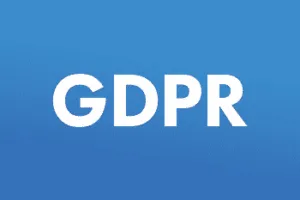In 2019, the national per capita healthcare expenditure in the U.S. was recorded to be about $11,582. This number has been steadily growing over the years. What’s most alarming about this figure is that it’s double what other ‘rich’ countries are spending per person. Surprisingly, this high expenditure does not come with better health outcomes and hospital revenues have plateaued.
With the realization that something needs to be done, many healthcare organizations are now turning to predictive analysis to cut down overspending on poor stock management, patient care, and staff deployment. Here are four ways to reduce healthcare costs with Predictive Analytics.
1. Predict the Likelihood of Readmission After Discharge
Since Medicare came into being, the federal government now penalizes hospitals for excessive readmissions by up to 3% of their Medicare expenses. Analytics tools can help identify patients with the specific symptoms and issues that lead to readmission. This helps healthcare providers take additional steps to prevent the patient from needing to return within the 30-day window.
Predictive analytics tools can develop a heat map for each patient who’s stayed out of the hospital past the 30-day period. Health care workers can look at easy-to-understand visual representations of the data to recognize where exactly in this 30-day period the patient is most at risk. This information helps them to plan interventions.
While the monetary incentive is a motivating factor, it also has to do with providing better overall care. Let’s think about it from the perspective of the individuals involved. The patient gets treated at the hospital but their treatment doesn’t end there. Healthcare workers need to coordinate handoffs to post-acute caregivers. Hospital care triggers a continuum of decisions that need to be made at various points in the patient’s recovery cycle.
2. Predict Complications & Infections
Surgical Site Infections (SSIs) are the most frequent and expensive type of hospital-acquired infection, with the number of occurrences in the U.S. ranging between 160,000 and 300,000 per year. The total financial impact of these infections can add up to $10 billion annually. Many factors can lead to SSI, such as the patient’s own health record of having hypertension or diabetes. However, what happens in the operating room is just as important.
Let’s have a look at how Predictive Analytics is used in actual practice. The University of Iowa Clinics & Hospitals applied its own data of their surgical patients in a predictive model. The model considered operating room procedures and post-operative care outcomes from previous surgeries. This was fed into predictive software that pulled more data from a wider number of sources like national medical registries. Once this model was in place, it was used in real time in the operating room itself. During the operation, a nurse feeds in real-time data of the patient’s blood loss, medical records and other variables. Before the patient is rolled out of the room, the risk analysis for infection is available to the surgeon. Based on the results, medication and techniques for post-operative care are put in place to minimize the risk. The university found that there was a reduction of SSIs by about 58%.
3. More accurately predict hospital staffing needs
In many healthcare facilities, on-the-fly scheduling is done without considering other factors, which can sometimes lead to a staff shortage that will affect patient care. Accurate staffing is extremely important because half of a hospital’s budget is spent on labor costs. Predictive analysis is now helping administration and managers to better cope with staffing challenges at least 30 days in advance. Healthcare predictive analytics software makes use of intelligence from historical staffing numbers, local weather trends, seasonal infections, holidays and more, available for each organization. This leads to reduced labor costs and efficient, cost-effective shift management.
4. Control Hospital Costs of Drugs and Supplies
The cost of pharmaceutical drugs and other supplies average about 15% of hospital budgets. Better utilization and reduced stock expiration can positively affect the bottom line. Pharmacy data analysis is now a business tool that needs to be leveraged to mitigate this issue. If a hospital is normally prepared for a certain number of patients per day, and that number is greatly surpassed, it could mean a staffing emergency, as well as the supply room running out of gloves, syringes and other necessities. Predictive analysis can ensure these issues are eliminated and, at least, minimized.
If your organization would like to learn more about the impact of Predictive Analytics on staffing, inventory and other business issues, reach out to the 7T team today. Our staff of data scientists and developers have experience analyzing copious amounts of healthcare data, along with data from many other industries. Our data governance tool, Sertics, helps put the power of Predictive Analytics in your hands, without the need for hiring additional data scientists or business analysts.










